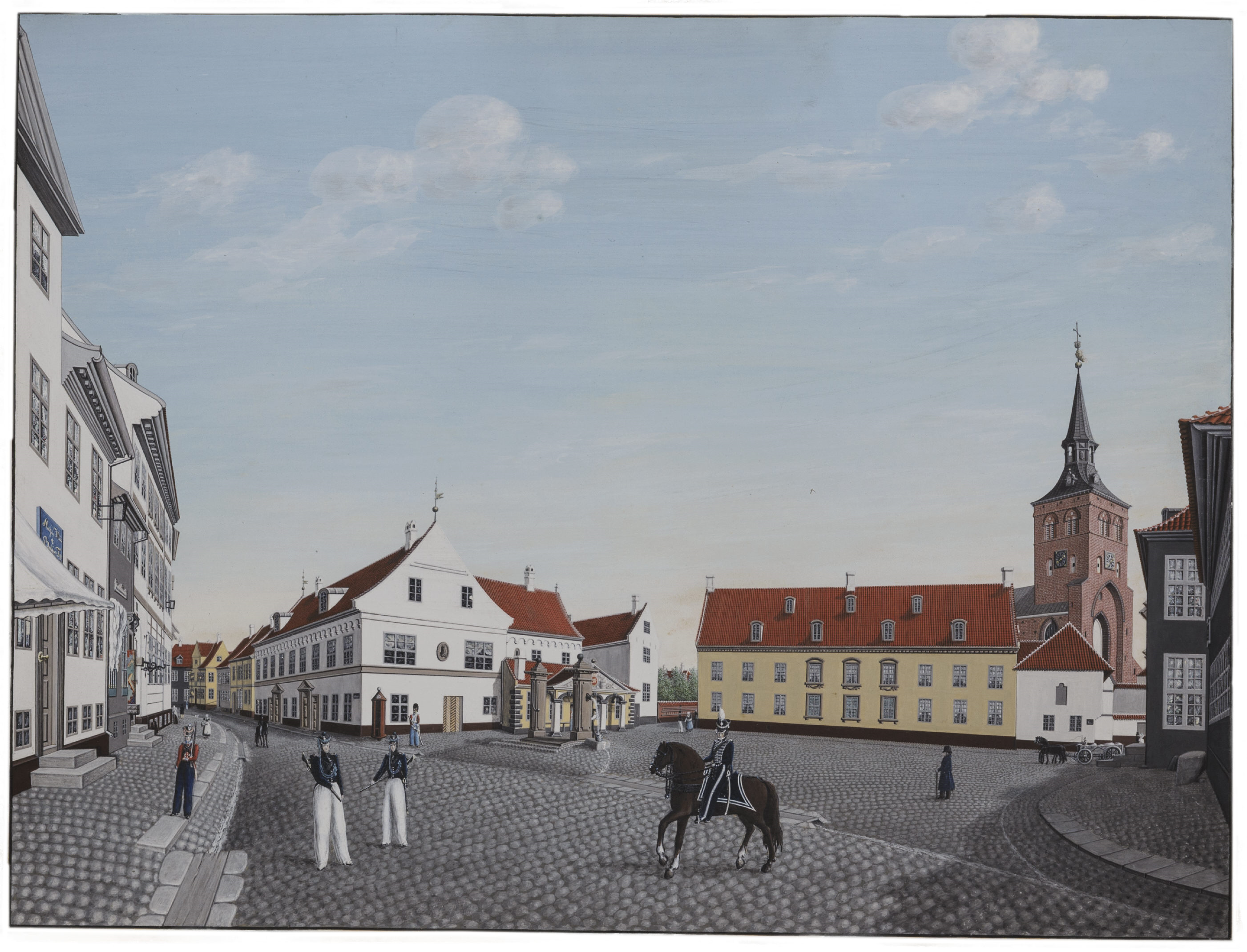The Churchyard as an Urban Empty Space for Communal Devotion and Display
The elevation of S. Canute the Holy in 1100 and a new cathedral under construction to be his shrine, complete with a monastery of Benedictine monks, who maintained the cult of the royal saint, marked the creation of a new religious center in Odense. Together with the bishop’s palace in the east, the former cathedral and parish church of S. Alban and the monastic watermill they created a continuous ecclesiastical compound along Odense River. In addition, the church of S. Alban and the cathedral of S. Canute were surrounded by large churchyards forming two spacious precincts in the densely build up medieval center of Odense.
Excavations have revealed that while the churchyard of S. Alban contained massive number of medieval burials, the churchyard of S. Canute had less than half the average numbers of burials pr. square meter. The lower number of burials have been explained by the exclusivity of the royal shrine, but may alternatively be due to the churchyard having other functions as well, taking on various roles as ceremonial space during the feast of S. Canute or as a construction site during the protracted construction of the present cathedral.
This project will examine the churchyards as “urban empty spaces” as defined by M. Smith in an attempt to show, that the apparently sparsely used space of S. Canute’s churchyard had other temporarily functions, and that more subtle demarcations subdivided the area into different zones of use. The different functions may also be regarded as expressions of contention between the various agents in the urban space. However, being the last space before pilgrims entered the shrine and the first space a procession carrying the shrine would enter on festive days, it would also be a place where people from far and near would join in communal worship.

The all but subtle demarcation between the public square of the town hall (white building to the left) and the main entrance to the churchyard of S. Canute to the left of the yellow building, which is incidentally the medieval diocesan chancery giving a strong ecclesiastical presence on the otherwise lay square.